 |
 |
 |
| |
PrEP Linked to Lower HIV Incidence in US, Independent of TasP
|
| |
| |
IDWeek, October 2-6, 2019, Washington, DC
Mark Mascolini
Regardless of the impact of HIV treatment as prevention (TasP), preexposure prophylaxis (PrEP) with tenofovir/emtricitabine independently contributed to declining HIV diagnoses (incidence) in 105 US metropolitan areas from 2012 through 2017 [1]. HIV incidence fell most in metropolitan areas with the highest PrEP use.
Tenofovir/emtricitabine got licensed for PrEP in July 2012. In the past decade, HIV incidence has been dwindling in the United States. Gilead Sciences researchers who conducted this study noted that falling incidence could reflect increased HIV testing, earlier antiretroviral therapy, higher proportions of infected people with an undetectable viral load, and growing use of PrEP. They conducted this study to assess the contributions of PrEP and TasP to the falling rate of new HIV diagnoses in US metropolitan statistical areas (MSAs).
The Gilead team analyzed data from (1) annual CDC HIV surveillance by MSA, (2) CDC estimates of PrEP use by jurisdiction, transmission risk group, and race/ethnicity, (3) National Real-World Data containing more than 84% of all tenofovir/emtricitabine PrEP prescriptions in the United States, and (4) US census population estimates for MSAs over the period 2012-2017. They calculated HIV incidence per 100 person-years with a formula in which the numerator was new HIV diagnoses by MSA per year and the denominator was (adults with PrEP indication alive at the beginning of each period x 1 year) - (new HIV diagnoses x average time exposed) - persons on PrEP x average time exposed with PrEP).
The investigators calculated PrEP use in 105 MSAs from a national pharmacy and medical claims databased and adjusted per the number of people at risk for HIV based on CDC surveillance. To calculate HIV incidence rates and incidence rate ratios, they used a Poisson regression model reflecting rate changes for each MSA over time after statistical adjustment for the effect of PrEP and TasP.
HIV incidence per 100 person-years fell steadily over the study period--from 4.72 in 2012 to 4.65 in 2013 to 4.18 in 2014 to 3.70 in 2015 to 3.66 in 2016 to 3.46 in 2017. Over those same 6 years, PrEP use per 100 persons with a PrEP indication rose from 1.6 to 2.2 to 4.4 to 9.6 to 11.9 to 15.4. PrEP use grew by an average 2.95% yearly. At the same time, the proportion of people with virologic suppression (viral load below 200 copies and at least one viral load test in the calendar year) rose from 79.8% in 2012 to 81.9% in 2013 to 83.3% in 2014 to 84.5% in 2015 to 85.7% in 2016 and to 86.7% in 2017. The proportion of people with viral suppression rose by 1.34% yearly.
Next the researchers divided the PrEP use rate into 5 equal portions or quintiles. With each higher quintile, the change in HIV incidence per year fell:
-- PrEP use 1.03, HIV incidence per year -0.23
-- PrEP use 2.57, HIV incidence per year -0.57
-- PrEP use 5.44, HIV incidence per year -1.2
-- PrEP use 9.67, HIV incidence per year -2.13
-- PrEP use 19.3, HIV incidence per year -4.24
The Poisson model determined that PrEP contributed 5.9% to declining HIV incidence over 2012-2017. For the same period, TasP contributed 2.9% to the decline. The model compared PrEP to no PrEP with TasP in the model, while it compared TasP to no TasP with PrEP in the model. With both PrEP and TasP in the model, the PrEP effect was 2.1 times greater than the TasP effect.
The Gilead investigators concluded that, from 2012 to 2017, HIV incidence dropped faster in MSAs with higher PrEP use. "The PrEP effect was statistically significant," they observed, "was independent of viral suppression, and was greater than the TasP effect." Using the same model, the researchers calculated that HIV incidence will fall by 41% by 2022 if PrEP use jumps by 50%.
Reference
1. Mera-Giler R, Das M, Hawkins T, Asubonteng J, Magnuson D, McCallister S. PrEP Significantly reduces the rate of new HIV diagnoses in US metropolitan statistical areas independent of treatment as prevention (2012-2017). IDWeek, October 2-6, 2019, Washington, DC. Abstract 1963.
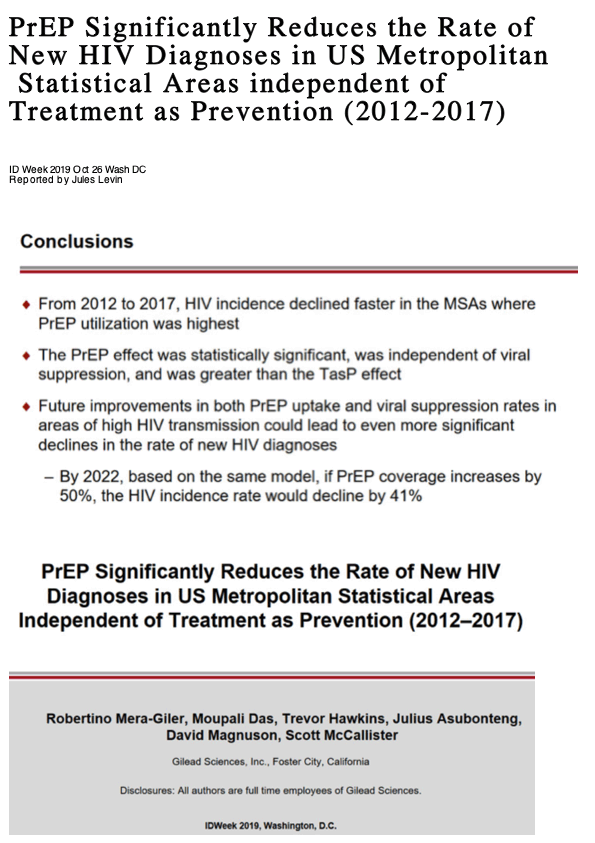
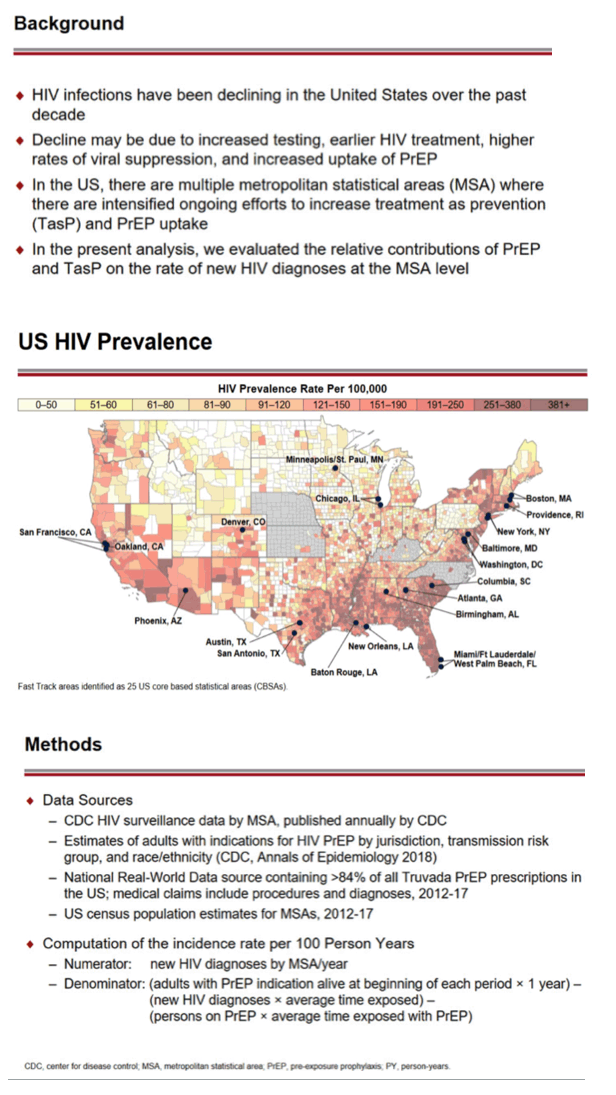
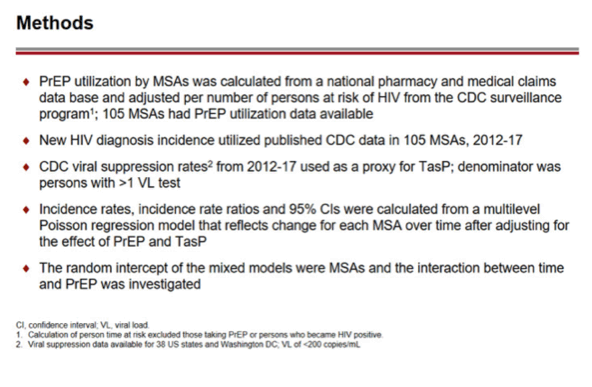
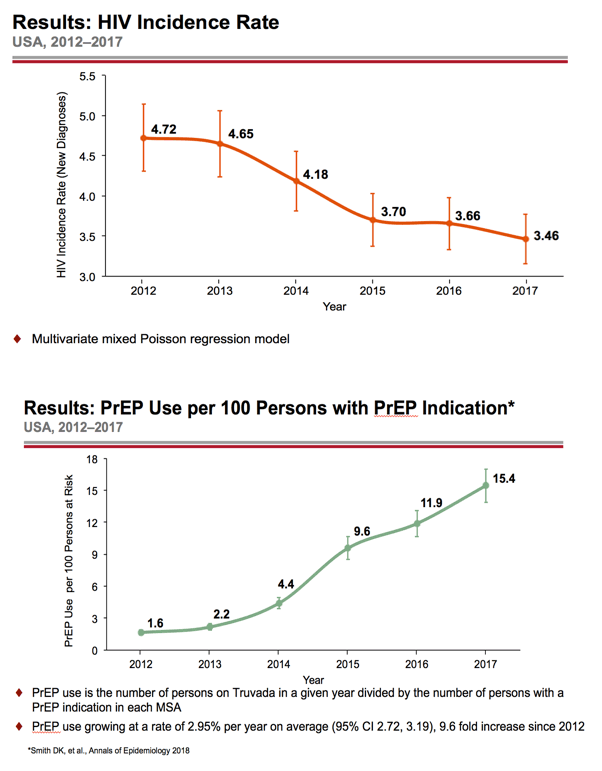
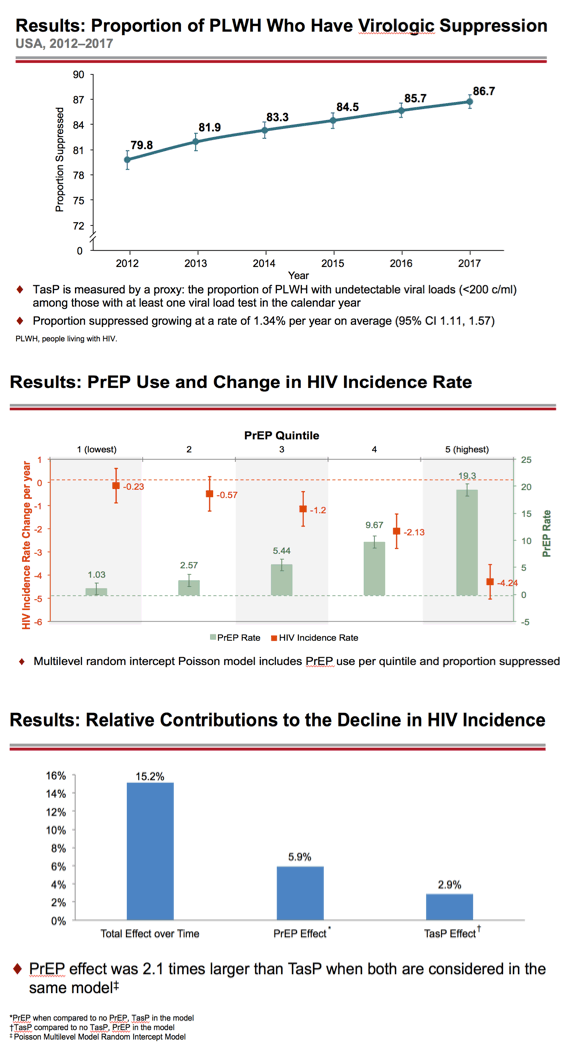
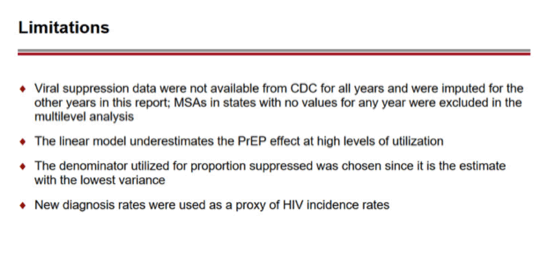
|
| |
|
 |
 |
|
|